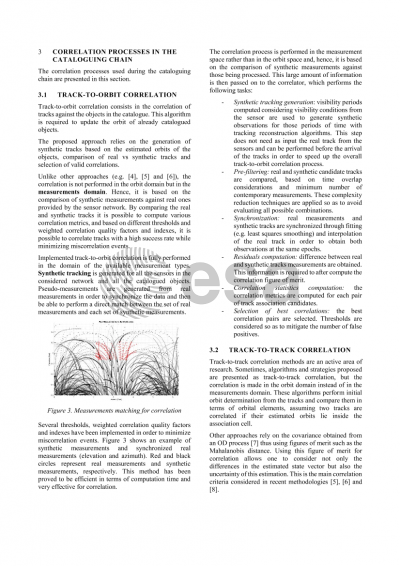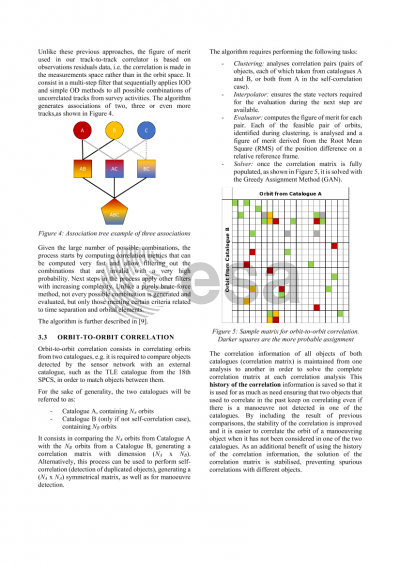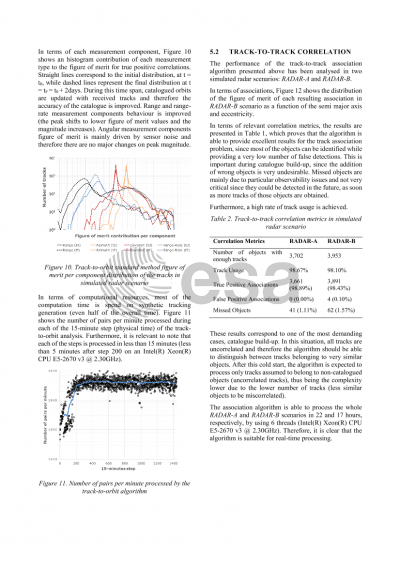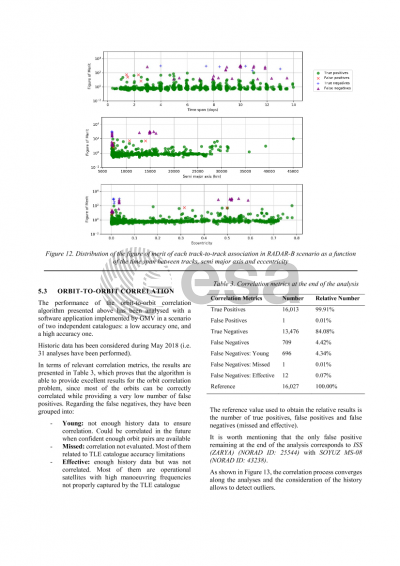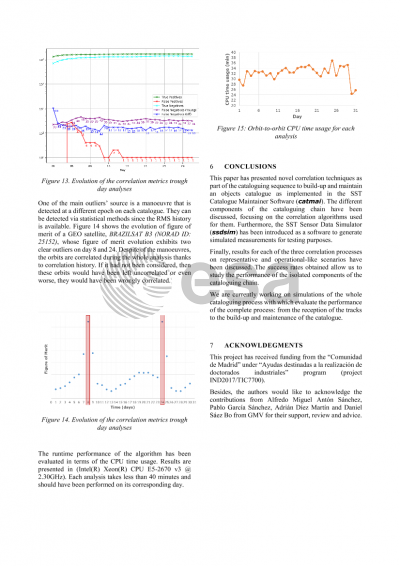Document details

Abstract
Human activity in space has caused the growth of a very large population of resident space objects (RSO). More than 19,000 objects are currently catalogued by 18th SPCS (former JSpOC) with sizes starting around 10 centimetres in LEO and around 1 metre in GEO. Most space agencies, and even the private sector, have their own programs to deal with this thread, both from a mitigation point of view and from an operations point of view (e.g., space surveillance and tracking, collision avoidance).
One of the key aspects to implement such measures is the availability of a catalogue of RSOs, not only characterising the properties of the objects, but also providing precise ephemerides that allow the prediction of high-risk collision events accurate enough and time in advance. Such a catalogue must be built-up and maintained through the processing of observation data from various types of sensors, including radars and telescopes, both ground-based and space-based, as well as satellite laser ranging stations.
This paper will describe the methods used by GMV focusing on recent improvements and the resulting performances in terms of success rate and false positive detection, as well as in the orchestration of all these methods in the overall data processing scheme for catalogue build-up and maintenance.
From a global point of view, the data processing scheme entails mainly observation correlation and orbit determination. The observation correlation consists basically in assigning tracks to the right object. Ideally this is a simple process normally achieved by comparing real measurements with synthetic measurements generated from predicted orbits of the RSOs in the catalogue. However, there are a number of events that may increase the complexity of the process, mainly, new objects, manoeuvres and fragmentations. To achieve this goal, different types of correlation algorithms are used: track-to-orbit, track-to-track and orbit-to-orbit.
The proposed scheme for observation correlation consists in a series of correlation steps aimed at identifying and handling each of those events, taking into consideration their very different frequencies, namely:
- thousands of manoeuvres are executed by operational satellites every year
- hundreds of new objects are launched every year
- few fragmentations take place per year
Based on this the following sequential steps are considered in the observation correlation process:
- assignment of observations to RSOs already existing in the catalogue through track-to-orbit correlation without manoeuvres assumptions
- single-burn manoeuvres detection through track-to-orbit correlation with manoeuvre resolution
- new object detection via track-to-track correlation of uncorrelated tracks not having been assigned in previous steps
- multiple-burn manoeuvres detection via orbit-to-orbit correlation of spurious new objects corresponding to already existing objects having performed a manoeuvre
- fragmentation detection, looking for groups of new objects
The following correlation methods will be described in the paper, with special attention to recent improvements:
• Track-to-orbit correlation, to correlate new tracks with already catalogued RSOs. Traditionally, track-to-orbit correlation is performed in the measurements domain, by comparing synthetic measurements generated from predicted RSO orbits against real measurements provided by the sensor network. This comparison may be taken as the zero-th iteration of an orbit determination process. As a recent improvement, a so-called time-residual is now computed to capture the time shift (i.e., along track separation) between the predicted and real orbit of the RSO and handle non-linear effects due to it. This has allowed us to improve the false positive rate of the track-to-orbit correlation process.
• Track-to-track correlation, to associate uncorrelated tracks (UCTs) among them in order to identify new objects not previously catalogued (i.e. catalogue build-up). The main concept behind this new track-to-track association method is a multi-step filter that sequentially applies IOD and simple OD methods to possible combinations of UCTs.
• Orbit-to-orbit correlation, to correlate objects of the catalogue with those from external catalogues such as Space-Track’s public catalogue. The correlation information of all objects of the involved catalogues is maintained from one analysis to another. This history of the correlation process is stored and used to improve the reliability of the process.
• Manoeuvre detection, to detect manoeuvres performed by RSOs. Manoeuvre detection is proposed to be performed both in the measurements space and in the orbits space. The former is applied as part of the track-to-orbit correlation process and is able to handle single manoeuvres, while the latter is applied after the track-to-track association process and is able to handle multiple manoeuvres between the available tracks.
Preview


